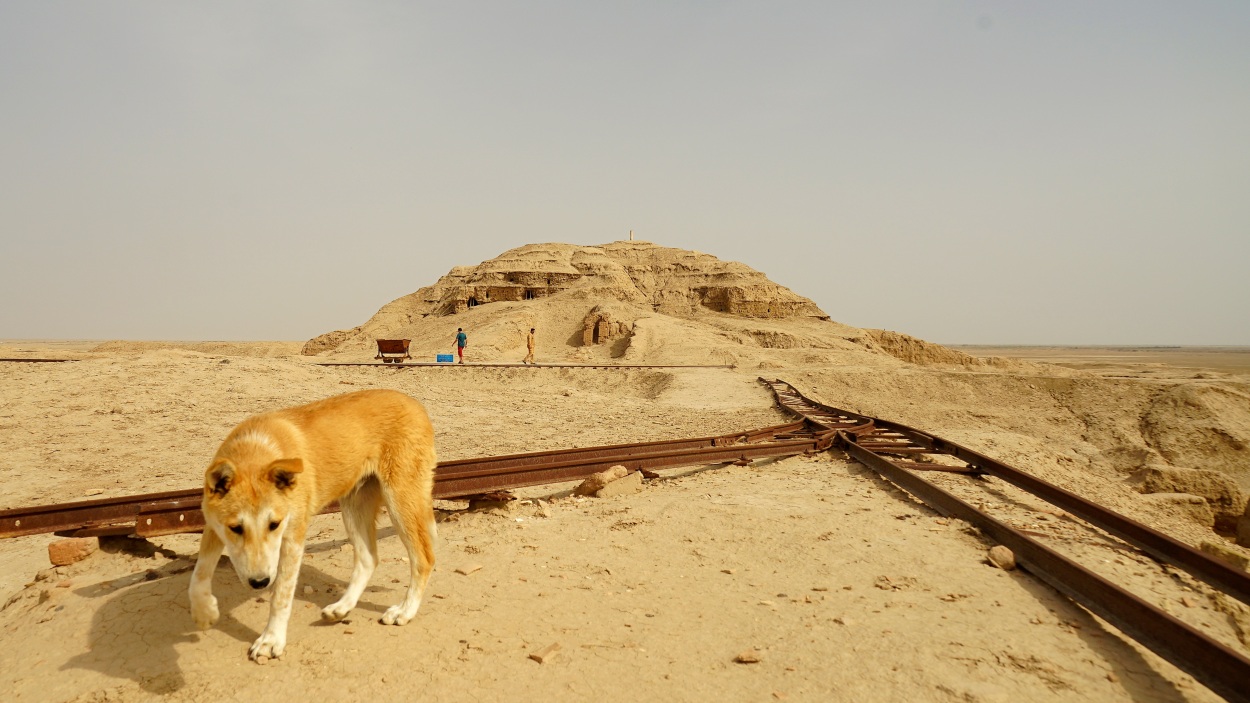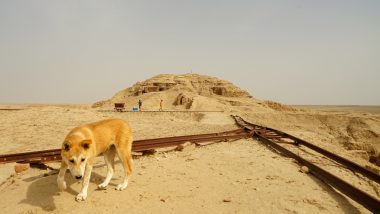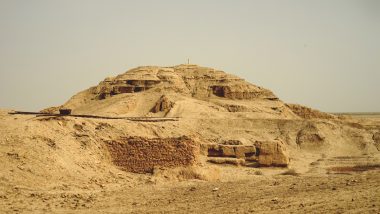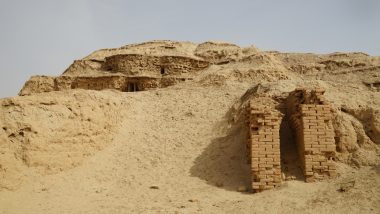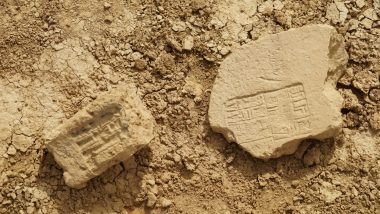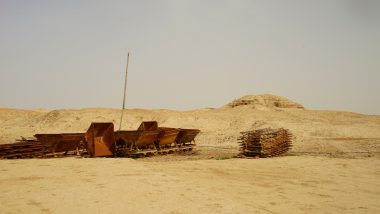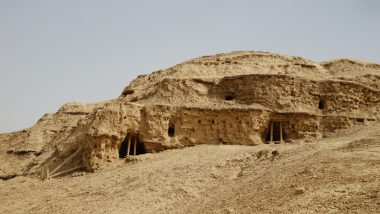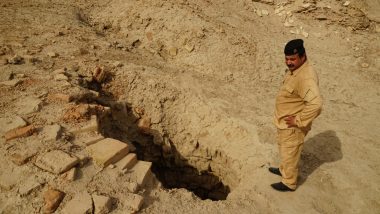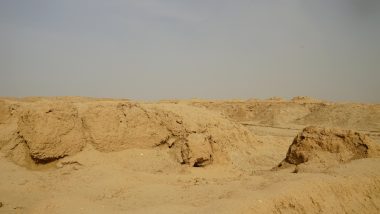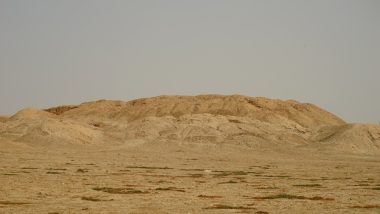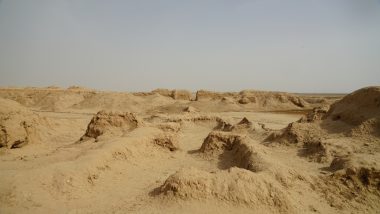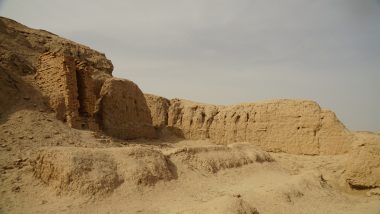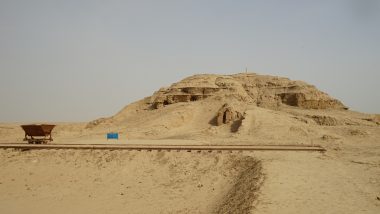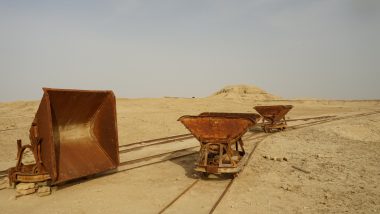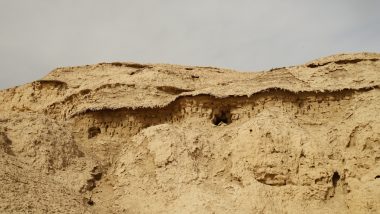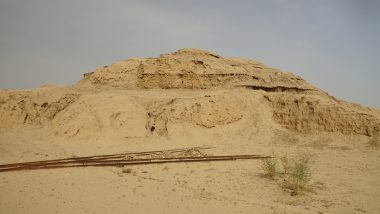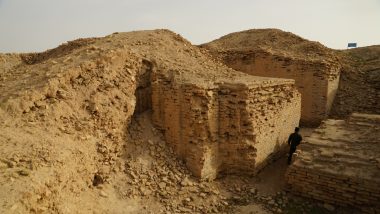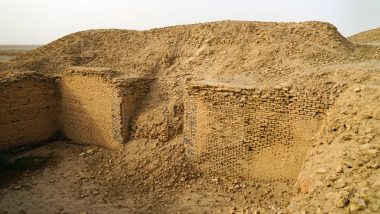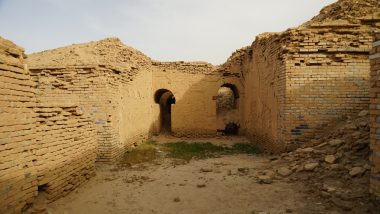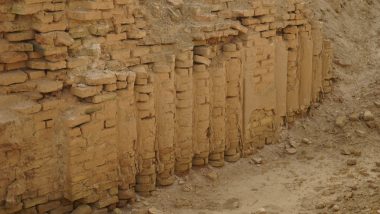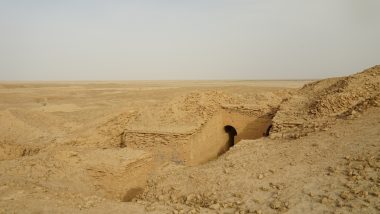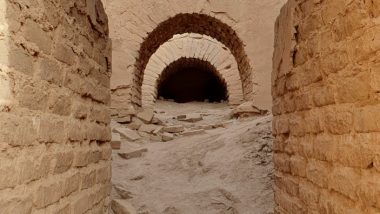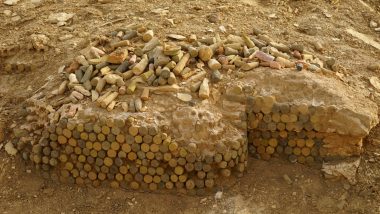Sumerian Uruk is an ancient Mesopotamian city located northwest of Ur (Tall Al-Muqayyar) in southeastern Iraq. The site was excavated from 1928 onward by the German Oriental Society and the German Archeological Institute. Uruk was one of the greatest cities of Sumer and was enclosed by brickwork walls about 10 kilometers in circumference, which according to legend, were built by the mythical hero Gilgamesh. Within the walls, excavations traced successive cities from the prehistoric Ubaid period, perhaps before 5000 BC, down to Parthian times (126 BC– 224 AD).
The two principal Sumerian divinities worshiped in ancient Uruk appear to have been Anu (Sky God) and the goddess Inanna (Queen of the Sky). One of the city’s chief landmarks is the Anu ziggurat crowned by the “White Temple” of the Jamdat Nasr period, which was one of great prosperity – gold, silver, and copper were skillfully worked, and seals and amulets reflected brilliant miniature craftsmanship.
We arrived around 14:00, and of course, it was closed. The guard told us they sell tickets in Samawah (one hour drive), where we should also arrange a permit and guide for our visit (for the next day). But as usual, he offered to open the gate for the fee of 25000 IQD for each. And the local policeman did accompany us during the whole visit to the site.
Parking location – Tall al-Warkā: 31.321173N 45.624594E


